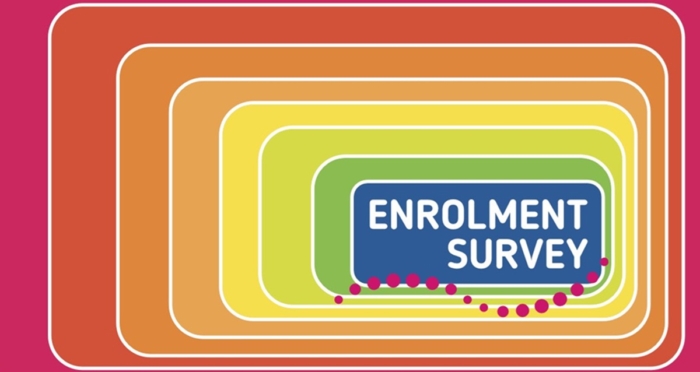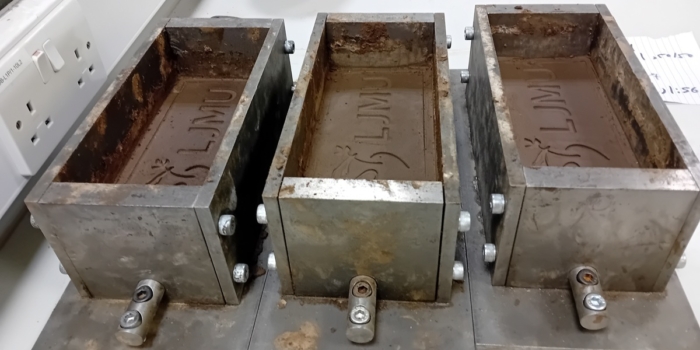Our 10-step guide to move from idea to submission and secure European research funding
EU research and innovation funding offers significant opportunities to support your work, build international partnerships, and amplify the impact of your projects. But the application process can be complex – and highly competitive – which is why a strategic, well-prepared approach is essential.
Before you begin, ask yourself: Do you have an innovative idea? Have you identified potential partners to collaborate with?
Whether you’re new to EU funding or refining a previous submission, here are some key tips to keep in mind:
• Start early – much earlier than you think. Securing and negotiating with partners takes considerable time, particularly for full proposals. Build in a generous buffer for discussions around tasks, budgets, and responsibilities.
• Talk to an experienced EU bid-writer, either in your university or from a consultancy. Their input can be invaluable, especially for full proposals. They understand how to match your project to the evaluation criteria and communicate your vision clearly and persuasively.
• Form your partnership. Many consortia are formed through professional and academic networks. LinkedIn is a great place to discover emerging opportunities or signal your interest in joining a proposal group.
• Contact your National EU Horizons Advisory Office (UKRO in the UK’s case). They can offer detailed guidance, clarify eligibility questions, and point you toward relevant support services.
• Consider having an EU-based partner lead the project. In some programmes, this is strongly preferred – or even required – to strengthen the proposal’s competitiveness and eligibility.
By following the steps in this guide and leveraging the tips above, you’ll be in a stronger position to submit a compelling, well-aligned proposal.
1. Do you have an innovative idea?
It almost goes without saying that no submission will succeed if the central idea isn’t strong enough. What makes it brilliant is not just its academic originality and integrity, but how well it is presented and how well it fits.
The European Commission issues calls which define the parameters of the projects they will fund. If you are going to have to stretch those parameters to fit your proposal, or compromise the core strengths of your proposal to fit the parameters, then this idea is probably not in the sweet spot. You might feel it’s worth a punt, but there are many other submissions that will just fit this particular call better.
2. Find a suitable call
The European Commission advertises grant opportunities through calls for proposals, very similar to UKRI. To find a call, browse the websites offering an overview of available national and European calls for proposals here.
The call includes all the guidance information needed to submit a proposal and therefore it should be read with extreme care. It defines:
- The requirements of the call: scope, targeted objectives, and outcomes.
- The eligibility criteria.
- The evaluation criteria.
As mentioned above, your project proposal needs to match the requirements of the call very well (carefully read the key words used in the call).
As you read a call, look out for the main points:
- What activity s being requested and what results? What are the specific challenges, scope, and expected impacts?
- Grant limits for research proposals.
- Funding rate: many funding schemes require companies to contribute to the costs of the research proposals, and they can tie the release of funds to some milestones.
- Consortium criteria: there might be a minimum number of partners, and a minimum number of countries allowed. Note that some non-EU countries such as UK, Norway, Israel, and Switzerland, can be eligible to participate in EU proposals. There may also be criteria related to company size.
- The Technology Readiness Level (TRL) may be requested. This means how advanced and validated your technology is to be able to deliver the research. The TRL levels required are usually different for SMEs, middle-sized and large companies.
- Duration: the minimum and maximum duration is specified in the call. There is also the possibility to apply for longer timeframes for some fields (for example, health).
- The calls may be a Single stage or a Two-stage proposal process.
- Deadlines: by when one need to fill forms/upload and submit documents.
3. Find partners
You will need to build a consortium to apply. The following advice about how to do that is inspired by the EU Funding Playbook website (which is an excellent resource):
- Read the call text and identify the contributions and partner types needed.
- List the things you and your core partners could do or might want to do. This will help you identify the gaps you need to fill in building your consortium and will create clarity about what each partner is expected to bring to the table.
- Go out and find partners. Check your networks and, once you have some partners, get them to check theirs networks. Review research literature to see who is a leader in your field who might be an asset to your bid. Similarly, search for business partners who might be operating in the same field.
- Consider a ‘value chain’: invite current and potential clients and suppliers.
- Check the maximum grant and consider how many partners are allowed.
- Consider the number of countries you can involve (and the number of individuals from each) and allocate similar shares of the budget to each.
- Transparency is key. Estimate the maximum grant share for each country/partner and communicate it to your consortium.
4. Time
Do you have enough time to write your research grant proposal? It will take longer than you think to get the whole consortium aligned. Think about an adequate buffer for partner discussions on tasks and budgets.
5. Find more partners
As you develop your proposal, it may become clear that there are gaps in your consortium. It can be tempting to limit the team for budgetary or administrative reasons, but a bid can fail because the evaluators don’t see how the proposed team will be sufficient to deliver it. It’s better to bring in more partners now if they will add strength to the proposal.
6. Start the process by registering to EU Funding and Tenders Portal
7. Write your application
Align your proposal with the requirements outlined in the call. Use the same terminology where possible. Think Excellence, Impact and Implementation.
8. Cost your application
You will need to cover staff, travel (which is often higher than you expect for international partnerships), equipment, subcontracting and other direct costs. If it’s over the maximum limit for the call, you need to work out what can genuinely be cut. It’s better to reframe your bid around an acceptable budget than win a bid that you can’t deliver with the funds available.
9. Convince the evaluators
The evaluators come from diverse backgrounds, they work under time pressure, so all important information needs to be easy to find. They will evaluate the application based on a specific criteria and they give points usually from 0 to 5 or give a decision of ‘Go’ or ‘No go’. Sometimes they might find a grant application out of scope. Sometimes an interview of the applicants is part of the process.
10. Where to get help?
You can find all guidelines for calls on the Commission’s call pages.
The national contact point at UKRO (the division of UKRI dealing with European bids) can provide some support. (You’ll need to create an account.)
Your own faculty is likely to have an R&I BDM (Research and Innovation Business Development Manager) or you institution probably has an RaIS (Research and Innovation Services) team.
There are also consulting agencies which can be found through the European Association of Innovation Consultants.
We’d like to acknowledge the support of Professor Crina Oltean-Dumbrava of the University of Bradford for her support in creating this guidance and members of the EPC’s Research & Innovation Committee.
Do you have other tips or guidance to share? Please comment below.




